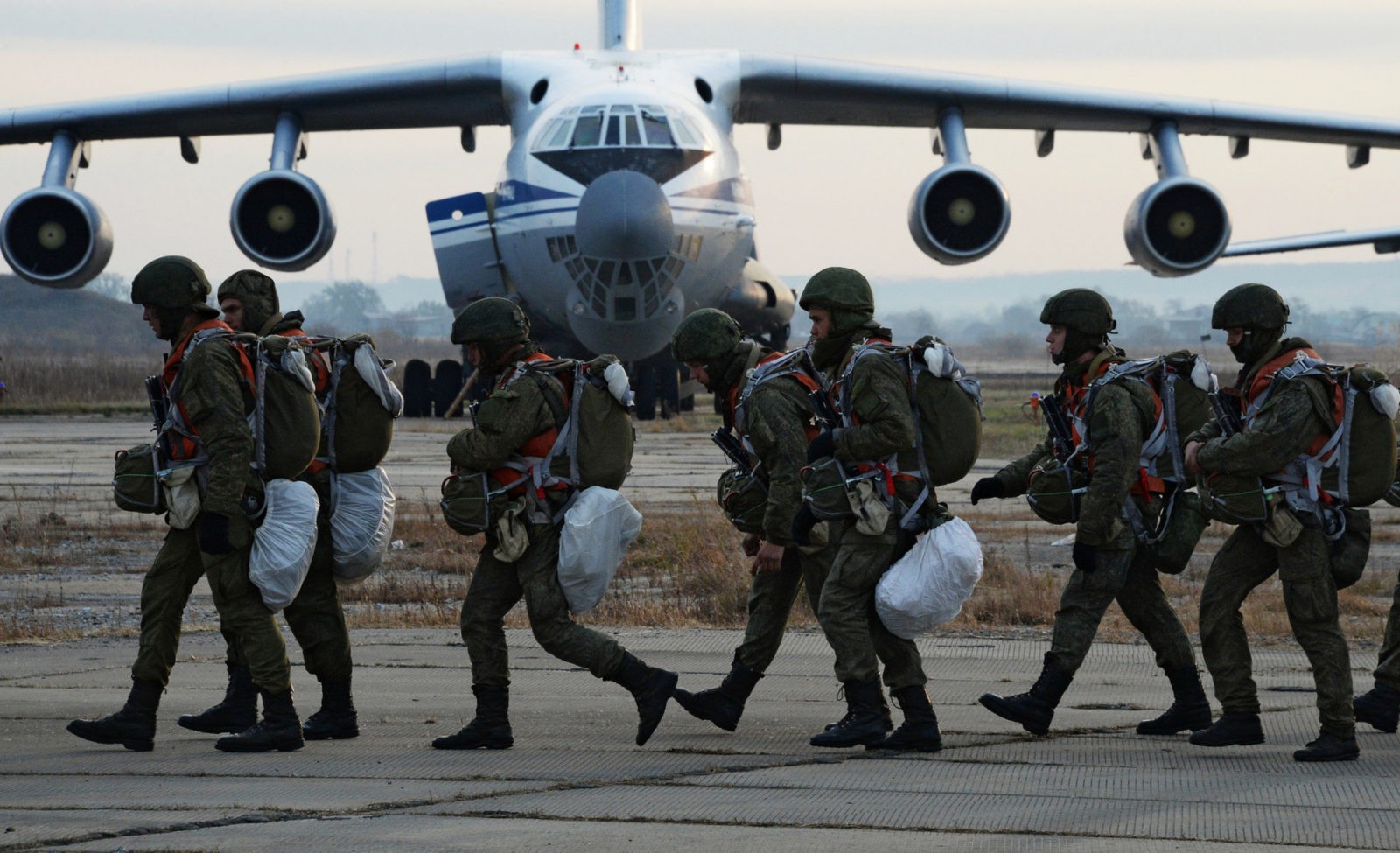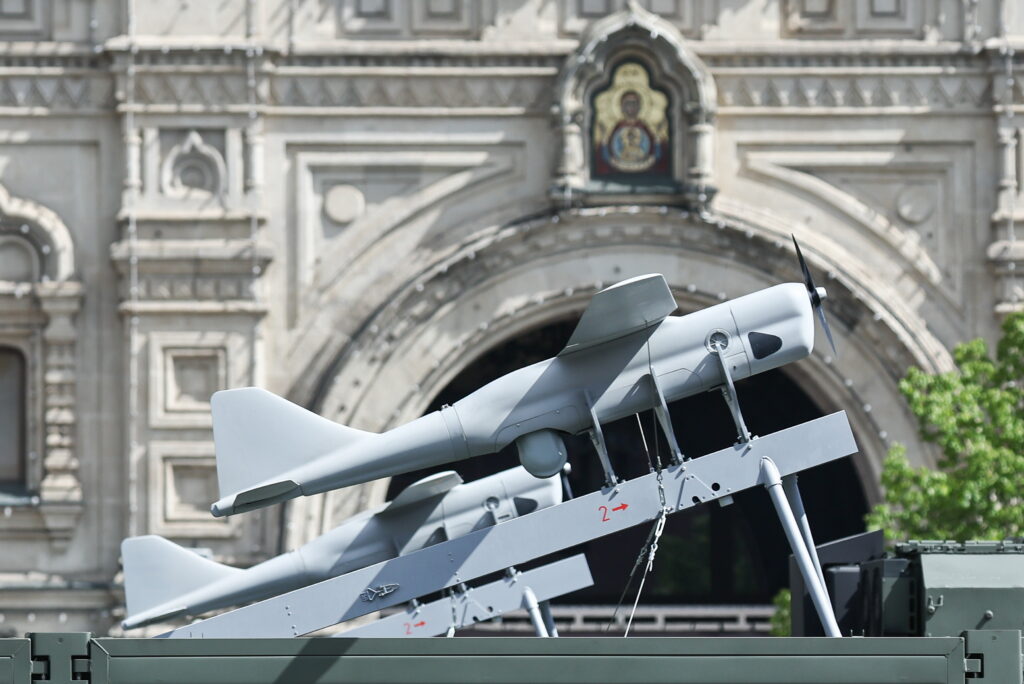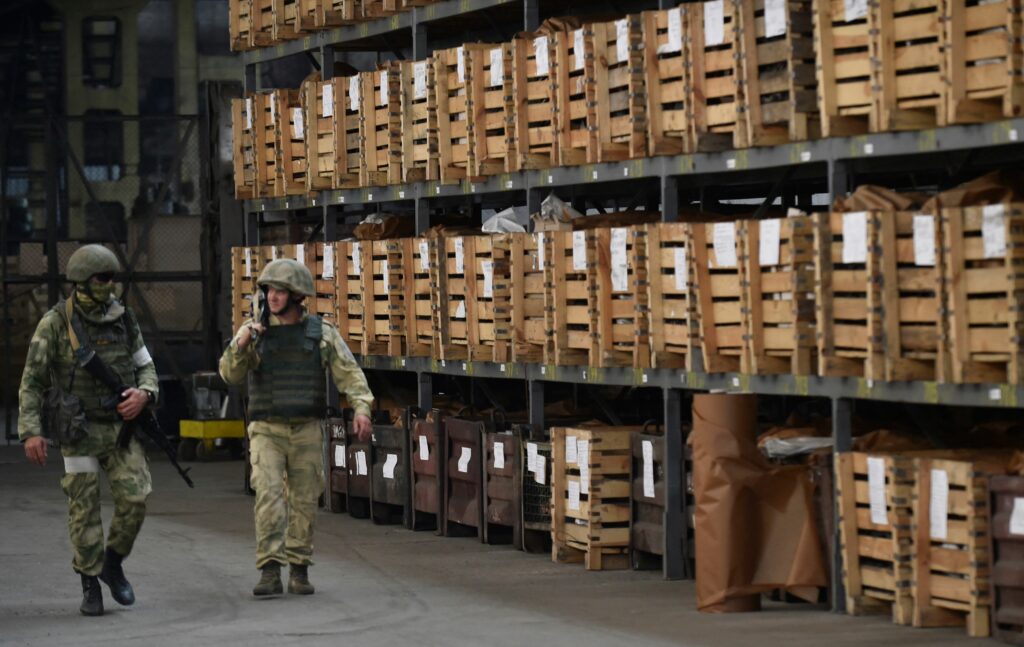Following the 2008 war in Georgia, the Russian government began focusing on improving the mobility of its military. During the late 2000s and early 2010s this initiative took several forms, most notably the armed forces reform programme named after then Minister of Defence Anatoly Serdyukov. The first results were seen a few years later, during military operations in Ukraine and Syria. In the course of the Vostok-2018 military exercises, Russia demonstrated its ability to deploy a strong military contingent on its territory within two to three weeks. When it came to a rapid and smaller scale force projection far from its borders, Russian military commanders had hoped to rely on six new troop transport ships, known as “Project 11711,” air transport, and six Mistral helicopter carriers.
But after the annexation of Crimea, delivery of the French-built Mistral ships became impossible. Meanwhile, orders of the newest model of troop transport ships were reduced, and those which remained were constructed with long delays. Consequently, air transport came to play a much larger role in the Kremlin’s military planning. Today, Russia is making great efforts to increase production of the Ilyushin-76 MD-90A and Ilyushin 112-B transport aeroplanes. In March 2019, the Russian armed forces received the first of 39 new Il-76 aeroplanes, which had been ordered in 2012. They are also ready to order several dozen more of these new aeroplanes. At around the same time, a new Ilyushin-112B completed its first flight. By some estimates, the Russian authorities will require approximately 150-200 transport aeroplanes of various types to meet its military requirements.
Recent developments suggest just how much importance the Kremlin attaches to this project. In April, Aleksey Rogozin, son of head of Roskosmos Dmitry Rogozin, left his post as head of the Ilyushin aircraft company (which is a subsidiary of the state-owned United Aircraft Corporation) This took place just after the Deputy Prime Minister Yury Borisov publicly criticised the delayed deliveries of new transport aeroplanes for the military. This was an unusual display in the Russian political arena, where family connections and personal loyalty tend to be more significant than professional competence.
In any case, Moscow already has a reliable and fully operational fleet of military transport aeroplanes. These aeroplanes did not only play a crucial role in Syria, but has certainly also been of assistance to Nicolas Maduro in Venezuela and in securing a Russian presence in the Central African Republic. This fact raises inevitable questions: why does Russia need dozens of new aeroplanes? And will they really improve its force projection?
Inside Russia’s Air Transport Fleet
For several years, the backbone of Russia’s air transport fleet has been made up by 170 Ilyushin-76 aeroplanes (load capacity: 47 tonnes.) The Russian armed forces also possess 20 Antonov-124 aeroplanes (load capacity: 120 tonnes), a little over 60 Antonov-12 turboprop aircraft (load capacity: 20 tonnes), several Antonov-22 aeroplanes (load capacity: 60 tonnes) and over 150 Antonov-26 light transport planes (load capacity: 5.5 tonnes.) The last three models have now outlived their usefulness and the majority of them will probably be written off over the next few years.
After the USA, Russia has the world’s second largest fleet of military transport aircraft. While this asset plays an important role in domestic force projection across Russia’s immense landmass, it is important to remember that the number of aircraft is often less important that their technical specifications. Take the Ilyushin-76, whose dimensions are such that it is useless to much of the Russian military; many support vehicles simply cannot fit. This is why Russia’s airborne infantry units, for example, have had to order specially produced armoured vehicles light and compact enough to be carried inside an Ilyushin-76. And this despite the fact that, to a large degree, the aeroplane was designed with the airborne infantry in mind.
Roads and railways still play the main role in maintaining transport across Russia. Sea transport is preferred for operations conducted far beyond Russia’s borders, as could clearly be seen in military campaigns in Syria. The bulk of military equipment arrived in Syria by sea, while aircraft delivered soldiers, mercenaries, and some supplies, among which were helicopters and air defence systems transported by Antonov-124s.
It appears that Russia’s military air transport fleet, whatever its size, is of limited effectiveness, whatever the size of the country’s fleet. In order to change the situation, Moscow is now betting on precisely those aeroplanes which are unlikely to improve its military transport capabilities. To a large part, the Russian military still largely relies on troop transport ships of Soviet construction, which have proven inadequate for the task. For example, in order to transport troops to Syria, Moscow even had to purchase several cargo vessels from Turkey. The only explanation for such peculiar moves is that, in the absence of checks and balances and expert advice, the Russian military’s entire strategy for military transport has been built on economic and political contradictions since its very beginning.
Production Problems
The Ilyushin-76 was initially produced in Tashkent, the capital of Uzbekistan. Moscow only reached a decision to launch domestic production of the aeroplane in 2006. The rationale for this move was presumably to allow the state-owned United Aircraft Corporation, founded the same year, to take over production of an even wider range of aircraft types. Furthermore, there were high hopes at the time that the company might develop a strong network of contractors from commercial enterprises and foreign governments alike. But things didn’t turn out that way, and the process of reproducing and modernising the Ilyushin-76, as well as developing the new Aviastar-SP factory in Ulyanovsk, dragged on for a decade.
Once production was launched in Russia, the Ilyushin-76 received new PS-90A turbofan engines; a model which had already entered service in the late 1980s for the commercial Tupolev-204 and Ilyushin-96 commercial airliners. Hence the modernised aircraft was given a new full name: the Ilyushin-76MD-90A, with a higher load capacity of up to 60 tonnes (however, as the aircraft’s dimensions remained the same, the previous limitations to types of load remained unchanged.) These upgrades potentially mean that the ageing fleet of Ilyushin-76 aircraft will remain operational for many years to come: the older D-30KP engines are still being produced at Rostech’s ODK-Saturn factory in Rybinsk, while the aeroplanes themselves still have the potential to be modernised. Therefore, far from replacing the earlier models produced in the 1980s and 1990s, the introduction of the new Ilyushin-76MD-90A aircraft actually extend their service life.
Things have turned out quite differently with the Ilyushin-112B, which was envisaged as a replacement for the ageing fleet of Antonov-26 transport planes. Design began in the mid-2000s, and a contract with the Ministry of Defence to finance its development was concluded in 2014. When its first test flight was conducted in March 2019, the new aeroplane turned out to be heavier than expected, meaning that the llyushin-112B will require serious redesigns before it can enter service.
From the late 2000s to early 2010s, there was talk of a new military transport plane with a load capacity of 20 tonnes, to be jointly developed with India. The new aeroplane would replace the even older Antonov-12 fleet, becoming Russia’s new light military transport aircraft. However, this cooperation reached a dead end, and Moscow decided to proceed with the project alone. The new aeroplane has already been named the Ilyushin-276, although it is only in the conceptual design stage. The new transport plane will be equipped with PD-14 engines, which are currently being developed for the MS-21 commercial airliner.
The prospects look no better for heavy transport planes. Any thoughts about restarting the joint production of the Antonov-124 stopped in the summer of 2014. It is important to remember that the Russian military did not initially treat the idea very seriously, as it continued to rely on sea transport. As international politics changed, Moscow decided to develop a Russian version of the Antonov-124. Today the new aeroplane is at the earliest stages of research and development, and will not enter service before the 2030s. This delay is largely due to the development of its new PD-35 engines (the newest variant of the PD-14), which has already cost over $3 billion.
A further problem is that the production capacities of the factory where the PS-90A and PD-14 engines are produced (and where the PD-35 is being developed) are still quite limited respite the millions of roubles of state investments in the facility. From 2016 to 2018, approximately 24-25 PS-90A engines and two PD-14 engines were produced on an annual basis. In theory, the factory should be able to produce 30 of the former every year. Given these output levels, plans to produce 50 PD-14 engines a year by the mid 2020s look doubtful.
In all likelihood Moscow will eventually recognise these limitations, particularly as by 2014 it had spent over two decades working towards another joint project with Ukraine: the Antonov-70 transport plane. With a load capacity of 47 tonnes, its dimensions allow it to transport military hardware which cannot fit into an Ilyushin-76, albeit with a shorter range. Russia had planned to purchase several dozen Antonov-70 aircraft, but the annexation of Crimea and outbreak of war in the Donbas marked a death sentence for the project.
On the whole, the number of projects has turned out to be far too ambitious given Russia’s real capabilities, and the foreign policy catastrophes of 2014 have made Moscow’s ability to complete them even more doubtful. Consequently, Russia’s fleet of military transport planes is unlikely to change much in the foreseeable future; in fact, the share of old Ilyushin-76 aircraft will only grow.
Burning Bridges
All the above will have significant consequences for the Kremlin’s geopolitical goals for several reasons. Firstly, whatever its plans to expand its fleet of military transport aircraft, Russia will not be able to launch spontaneous campaigns far from its borders. Future military adventures may not even on the scale witnessed during its intervention in Syria, which included several thousand soldiers and heavy weaponry. The Russian armed forces largely relied on ports to transport a limited number of soldiers to the conflict zone; the role of airfields came later. The sole exceptions involve the airborne infantry and special forces, both of which still require ground support sooner or later.
Secondly, the means that Russia’s overseas military campaigns will henceforth be oriented towards supporting friendly regimes, which can provide the necessary infrastructure for deploying troops and bear the brunt of any military engagements. Admittedly, Russia is expanding its capabilities for involvement in peacekeeping and humanitarian missions overseas, demanding transport of personnel and supplies, but not heavy weaponry. It is likely that Moscow will want to use such missions as a political instrument in coming years, given that they are comparatively easy to conduct in developing countries.
Thirdly, in order to organise any stable “airbridge,” Moscow will need long-lasting and steady relationships with any country whose airspace it will need to traverse and whose airports it might need to access for refuelling. Finally, the current development of Russia’s military transport capabilities will allow the military to quickly redeploy personnel across the country, but it will only be able to do so without heavy weaponry. This means that more military storage facilities will probably be developed across within Russia’s borders, in turn allowing for the rapid deployment of military formations able to launch surprise attacks anywhere in the post-Soviet space.










